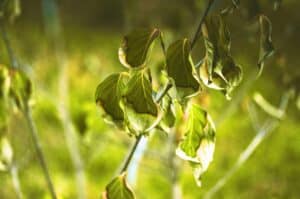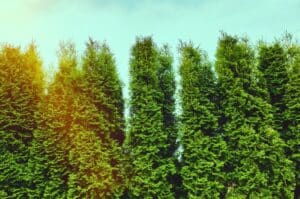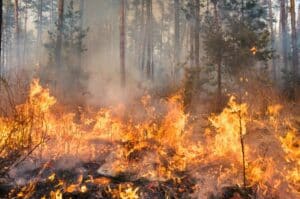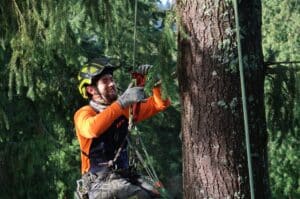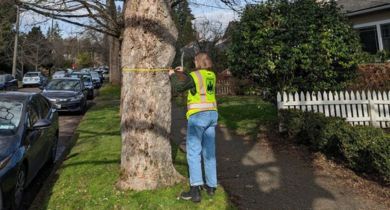Better Mulch, Better Garden: Why Quality Matters for Long-Lasting Results
Learn why quality mulch matters for a healthy garden. Discover the best mulch types, when to apply them, and get next-day delivery from Seattle Tree Care.
A stunning, well-manicured garden isn’t just luck – it’s strategy. If you want lush, vibrant plants and clean, weed-free beds, the secret weapon isn’t hours of backbreaking labor; it’s using the right mulch. But not all mulch is the same – quality matters if you want lasting results.
Key Takeaways:
- Mulching provides essential benefits such as moisture retention, weed suppression, and soil enrichment, making it a must-have for a thriving garden.
- The best time to mulch in Seattle is early spring to prepare for the growing season or late fall to protect plant roots from winter cold.
- Organic mulch, like wood chips, improves soil health over time, making it ideal for flower beds, vegetable gardens, and tree care.
- Premium wood chip mulch offers reliability – unlike free options like ChipDrop, which can be unpredictable in timing and quality.
- Proper mulching techniques matter – apply 2-4 inches, leave space around tree trunks, and avoid mulch volcanoes to prevent rot and pest problems.
The Benefits of Mulching
Mulch is important to any tree’s health. But what exactly is mulch? Mulch is any material placed around plants to improve the soil. Whether it’s the layer of duff on the forest floor or the wood chips from a recent landscaping project, mulch benefits trees in numerous ways.
In forests, fallen leaves, branches, and other organic matter break down over time, enriching the soil. Applying mulch to your garden replicates this natural cycle to improve soil conditions and plant health. Here’s why mulching is important:
- Temperature Regulation: Mulch insulates the soil, keeping it cooler in summer and warmer in winter.
- Moisture Retention: It prevents water evaporation, helping plants stay hydrated for longer.
- Weed Suppression: Mulch blocks sunlight, preventing weeds from sprouting and making any that appear easier to remove.
- Nutrient Enrichment: Organic mulch breaks down over time, releasing essential nutrients like carbon and nitrogen into the soil.
- Soil Improvement: Mulch helps prevent soil compaction, keeping it aerated and allowing plant roots to thrive.
When to Mulch in Seattle
Timing is everything when it comes to mulching, especially if you’re a homeowner preparing garden beds for the growing season. Whether starting fresh with new plants or maintaining an existing landscape, applying mulch at the right time ensures your garden thrives throughout the year.
The best time to apply mulch in Seattle is in early spring or late fall. Spring mulching helps retain moisture and suppress weeds before the growing season kicks in, while fall mulching protects plant roots from winter cold.
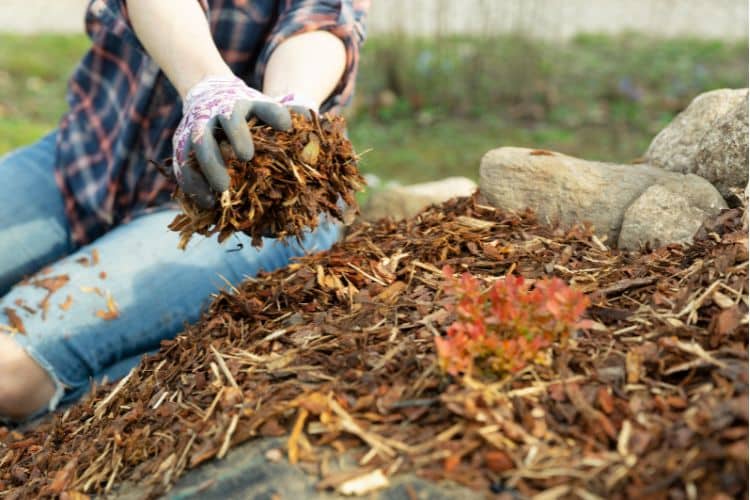
Choosing the Right Mulch for Your Garden
Organic and inorganic mulch each serve unique purposes in landscaping. Whether you’re enhancing curb appeal, insulating soil, or preventing weeds, selecting the right type of mulch ensures your plants and trees thrive.
Inorganic Mulch
Not all mulch is made from organic materials. Inorganic mulch options provide long-lasting weed control and are commonly used in areas where plant growth isn’t a priority, such as pathways, playgrounds, and decorative landscapes.
Unlike organic mulch, inorganic mulch does not break down over time, making it a low-maintenance choice. Some homeowners choose inorganic mulch for its durability, not realizing it absorbs heat, which can raise soil temperatures and stress plants.
Types of inorganic mulch include:
- Landscaping Plastic and Rubber (like recycled tires)
- Pebbles
- Crusher Dust
- Gravel
- Lava Rock
- Slate Chips
Organic Mulch
Organic mulch is the top choice for gardeners who want to improve soil health while offering natural protection for plants. Unlike inorganic mulch, organic materials gradually break down, replenishing the soil with essential nutrients and fostering a healthier growing environment. This makes organic mulch ideal for flower beds, vegetable gardens, and tree care.
Types of organic mulch include:
- Wood chips
- Bark Nuggets
- Grass Clippings
- Leaves
- Shredded Newspaper
- Hay
- Compost
- Manure
Which Type of Mulch Is Best?
With so many mulch options available, what works best for trees and garden beds? As arborists, we always recommend wood chips as the ideal mulch for tree health and soil enrichment.
Wood chips provide all the benefits of organic mulch while also repurposing trees that have been removed, making them a sustainable option. Unlike uniform bark mulch, arborist wood chips contain a natural mix of woody and leaf material. This combination decomposes at different rates, delivering a steady supply of nutrients to the soil both immediately and over time.
Choosing wood chips means healthier, more resilient trees and plants while improving the overall structure of your garden beds.
Why Choose Premium Wood Chip Mulch?
Free mulch options, like ChipDrop, are convenient, but they come with uncertainty – you might wait weeks and still not know what you’re getting. If you want reliable, high-quality mulch delivered on schedule, premium wood chips are the way to go.
By purchasing high-quality wood chip mulch, you can expect:
- Next-day delivery – so you can plan your garden projects without delay.
- Consistent quality – free from debris and unwanted materials.
- Reliable supply – we guarantee availability and convenience.
With premium wood chips, you get exactly what you need when you need it – helping your garden thrive without the hassle.
How to Apply Mulch Properly
Applying mulch the right way is just as important as choosing the right type. Incorrect application can lead to issues like smothered roots, pest infestations, and rot. Follow these mulching tips:
- Keep mulch 2-4 inches deep: Too much mulch can suffocate roots, while too little won’t provide enough protection.
- Leave space around tree trunks: Piling mulch against the trunk can lead to decay and attract pests. Keep the root flare (where the trunk widens at the base) exposed.
- Spread mulch evenly: Avoid creating “mulch volcanoes” by keeping the layer uniform and flat.
- Refresh organic mulch as needed: Since wood chips decompose over time, add a fresh layer each year to maintain benefits.
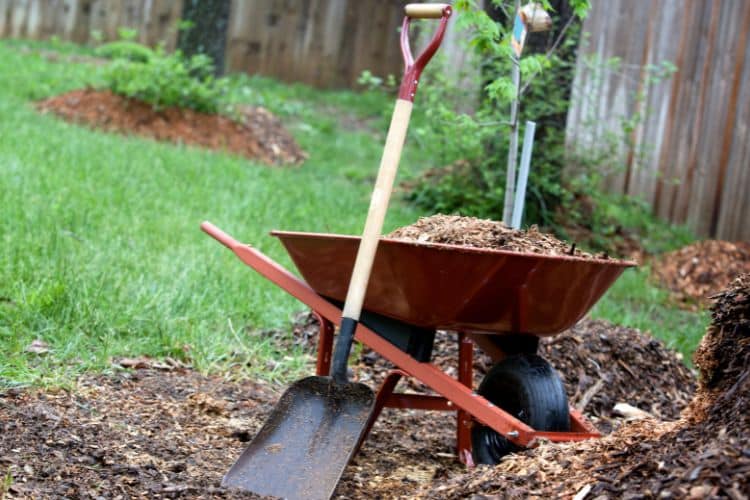
Looking for Wood Chip Mulch Delivery Near You? Call Seattle Tree Care Today!
Don’t let your garden projects be held up by uncertainty. Order premium wood chips from Seattle Tree Care with next-day delivery or same-day pickup at 2323 W Elmore St, Seattle, WA 98199, and ensure your landscape gets the best care possible. Our easy online order form helps you determine exactly how much mulch you need so you can plan with confidence.
Let’s get your garden growing – call Seattle Tree Care today at 206-222-0687 and schedule your wood chip delivery!
Recent Articles
Looking for More?
We've got you covered with tips, resources, updates, how-to's, and other helpful information about trees and landscapes in Seattle, Puget Sound, and King County, WA. Join the thousands of smart local residents who get the monthly newsletter from Seattle Tree Care for helpful information you won't want to miss!
There's no spam - we promise! We are committed to keeping your e-mail address confidential. We do not sell, rent, or lease our contact data or lists to third parties.


